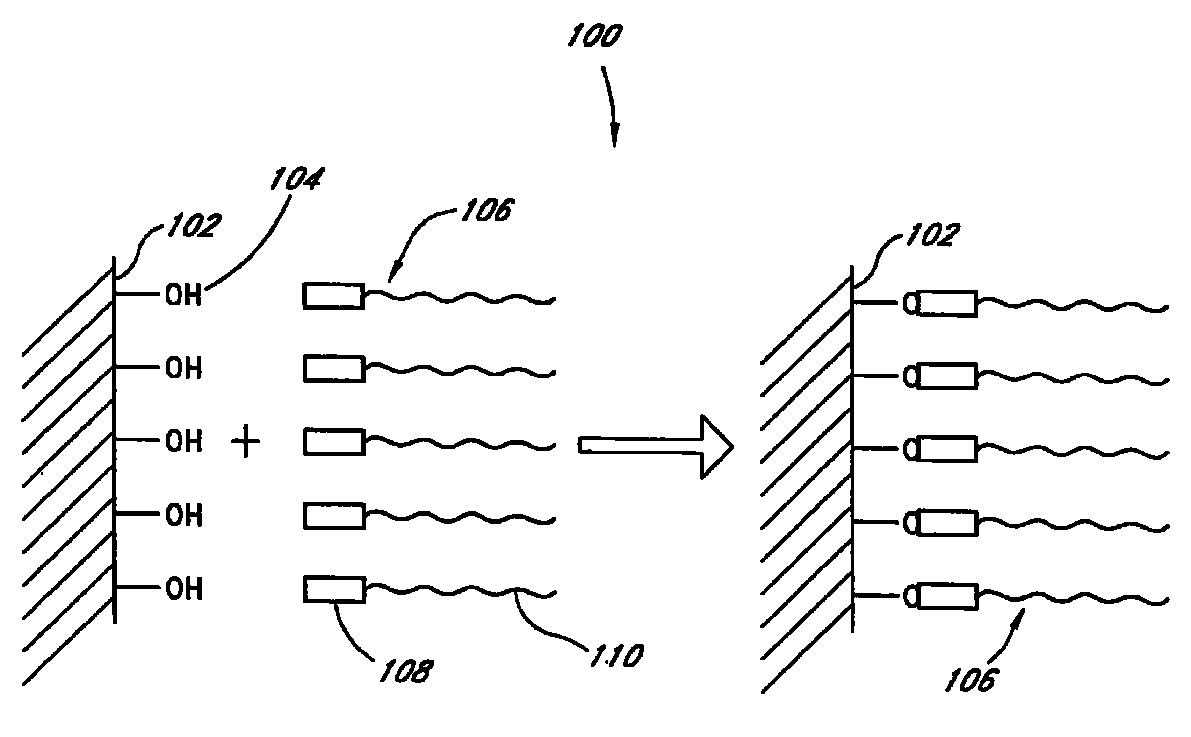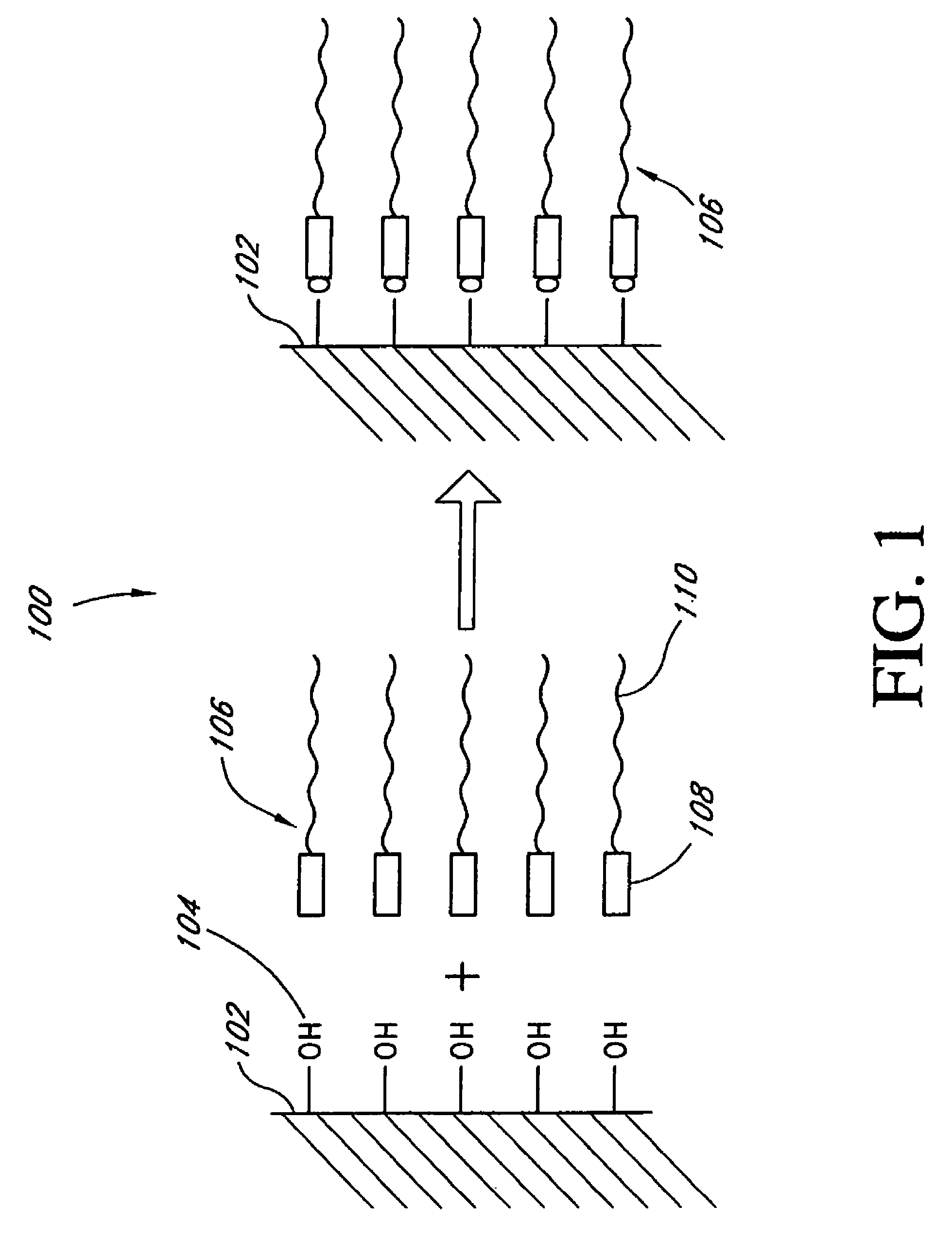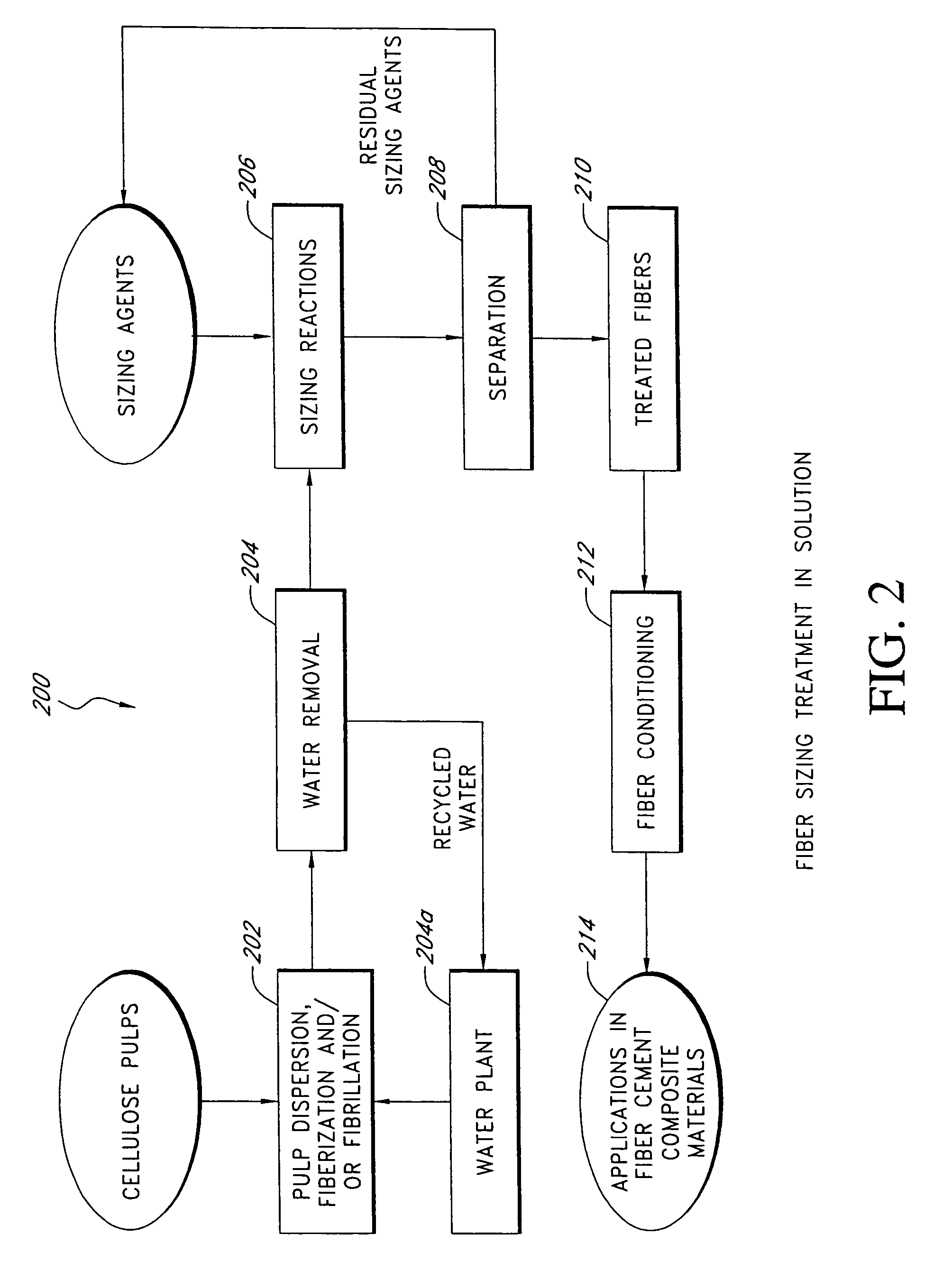Fiber cement composite materials using sized cellulose fibers
a technology of cellulose fibers and fiber cement, which is applied in the direction of climate sustainability, textiles and papermaking, solid waste management, etc., can solve the problems of inability to nail the density matrix, by no means universal manufacturing method, and the cellulose reinforced cement products are more susceptible to water induced damage, etc., to reduce water migration, reduce water permeability, and reduce water absorption rate
- Summary
- Abstract
- Description
- Claims
- Application Information
AI Technical Summary
Benefits of technology
Problems solved by technology
Method used
Image
Examples
example 1
[0169]Unbleached Kraft softwood pulp was pre-refined to 500 CSF before the treatment and the refined pulp was used for the sizing treatment. The sized fiber was prepared by treating the refined fiber with alkylsiloxane (Chem-Rex Enviroseal 100) for one hour at 4% of pulp consistency. The dosage of the sizing agent was 10% of the fiber mass and the reaction temperature was ambient under atmospheric pressure. Specimens of fiber cement composite materials were then formed using laboratory apparatus. The formulation for samples A and B, as well as C, D, E, F and G of the following examples are the same: 8% fiber (treated / sized fiber or regular untreated fiber), 35% Portland cement and 57% ground silica. The specimens were air cured for 8 hours at ambient temperature, followed by autoclaving at 180° C. for 12 hours. The physical and mechanical properties of the samples A and B are shown in Table 2.
[0170]
TABLE 2Comparison of Physical Properties of Fiber Cement Materialswith Sized Cellulos...
example 2
[0173]FIG. 5 illustrates the results from a water permeability test. Sample D is the control incorporating conventional unsized cellulose fibers while Sample C is made with a formulation containing cellulose fibers that are treated with acrylic latex (Valspar EPS2718) at a dose of 5% of fiber mass. Sizing reaction is carried out at ambient temperature for 30 minutes. The oven dry density of Sample C and D is about 1.3 grams per cubic centimeter.
[0174]The water permeability test comprises attaching a tube to a surface of the sample material in a manner such that one end of the tube is positioned adjacent the surface of the material sample. The tube is made of an acrylic material that is about 125 mm long and has an inner diameter of about 50 mm. After the samples are pre-conditioned to equilibrium under 23+ / −2° C. and 50+ / −5% relative humidity, the tube is filled with water and the water level inside the tube is periodically recorded. The decrease in the water level in the tube is re...
example 3
[0177]Freeze-thaw resistance refers to a material's resistance to damage due to water and temperature effects when exposed to repeated cycles of freezing and thawing. For concrete cement materials, the damage usually starts with flaking at the surface and gradually extends inward. Sometimes deep cracks may occur. The damage associated with freezing generally does not occur unless a sufficient quantity of water is present in the pores. It is well known that freeze-thaw damage in concrete is minimal when the concrete materials have low water to cement ratio and low permeability.
[0178]One advantage of the preferred embodiments is that the final products have improved freeze-thaw resistance as shown in FIG. 6. Sample E contains regular, unsized cellulose fibers and Sample F has the fibers treated / sized with a silicone emulsion that contains a number of compounds including n-octyltriethoxysilane, n-octyltrimethoxysilane, and n-octadecyltriethoxysilane and n-decyltriethoxysilane, etc. The...
PUM
| Property | Measurement | Unit |
|---|---|---|
| density | aaaaa | aaaaa |
| density | aaaaa | aaaaa |
| thickness | aaaaa | aaaaa |
Abstract
Description
Claims
Application Information
 Login to View More
Login to View More - R&D
- Intellectual Property
- Life Sciences
- Materials
- Tech Scout
- Unparalleled Data Quality
- Higher Quality Content
- 60% Fewer Hallucinations
Browse by: Latest US Patents, China's latest patents, Technical Efficacy Thesaurus, Application Domain, Technology Topic, Popular Technical Reports.
© 2025 PatSnap. All rights reserved.Legal|Privacy policy|Modern Slavery Act Transparency Statement|Sitemap|About US| Contact US: help@patsnap.com



